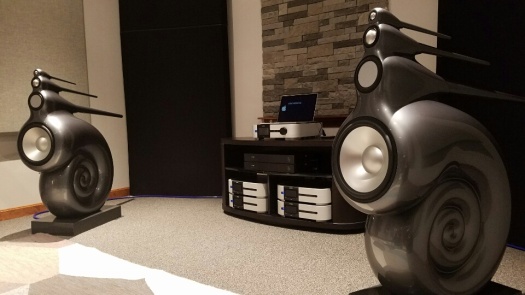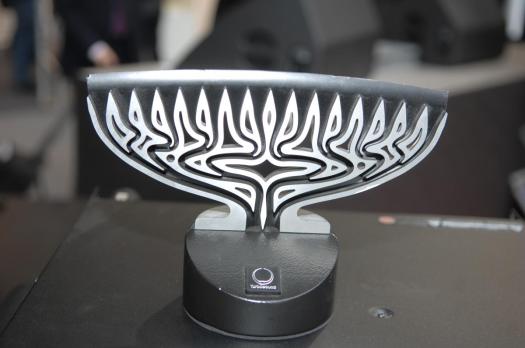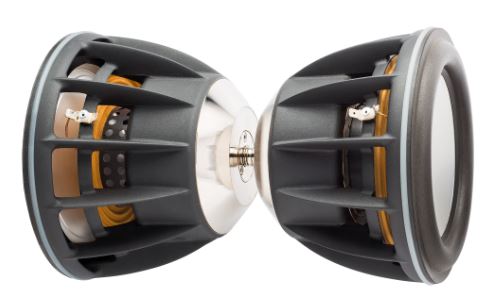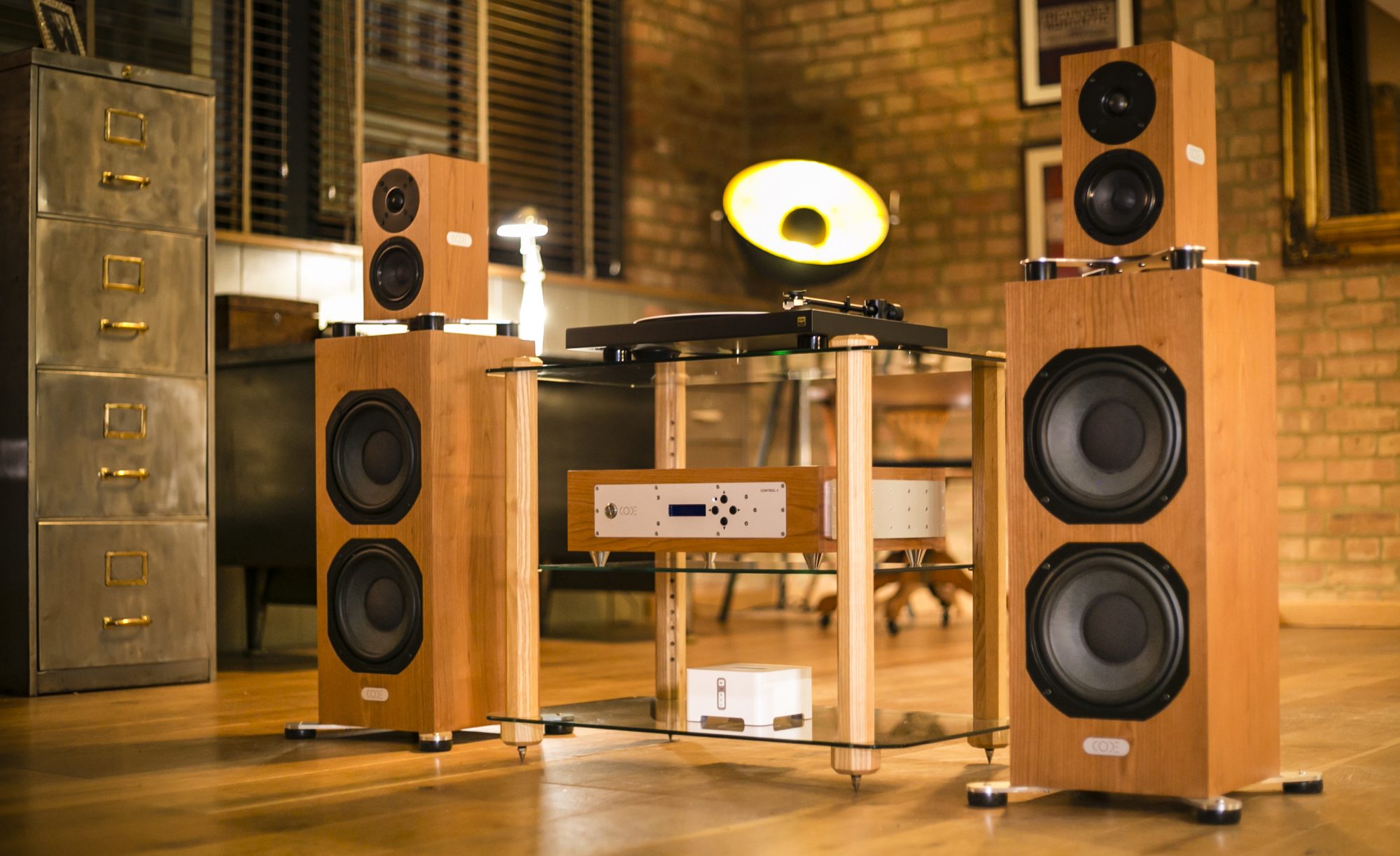Intro
Thanks for visiting the CODE blog! This will be the first part in a series investigating the work of some of the most influential audio designers.
In this first piece we’ll be looking at Laurence Dickie (LD), who’s the current Technical Director at Vivid Audio.

In my mind LD’s a pioneer and a visionary. A man with a relentless drive to push the boundaries of audio reproduction. But not just the small incremental steps even the good companies settle for, but significant conceptual shifts that have rivals thinking ‘hmmmm, we really need to up our game!’.
Who are we
If you’ve not heard of CODE, we’re a small high end hi-fi company based in Woking, England. My name is Ceri Thomas and I’m the founder and chief designer:

We specialise in active, DSP speakers, and you can see our SYSTEM-2 speaker below:

Disclaimer
Just to be clear; we have no commercial relationship with LD or any of the companies he’s worked at.
Bowers and Wilkins
LD started at B&W back in 1983. Fairly early on he developed the ‘Matrix’ enclosure:
http://www.bowers-wilkins.co.uk/Discover/Discover/Technologies/Matrix.html

This creates a significantly stiffer speaker cabinet than if it were not braced. There is also a secondary benefit that you have greatly increased the glued joint area. Glue is a very effective damping material and reduces cabinet resonance.
LD’s career at B&W culminated with him leading the design work on the renowned Nautilius speakers. It’s a four-way active design you can see below, and notable for it’s damped tapered tubes:
http://www.bowers-wilkins.co.uk/Speakers/Home_Audio/Nautilus

A pair will set you back a not inconsiderable £55k, which perhaps surprisingly in high end audio, is not crazy expensive!
This speaker was groundbreaking for a number of reasons that we’ll explore later. In the mean time here is a link to the brochure, which has some good info:
Click to access Nautilus%20Brochure.pdf
PA
After LD’s time at B&W, he worked as a long term consultant at Turbosound, creating the ‘Polyhorn’ and ‘Dendritic’ horn. Below you can see a Polyhorn, which gives more consistent sound coverage than a conventional horn:

The Dendritic horn is a concept to create a point source of sorts and eliminate the phase issues related to having the drive units physically some distance apart. Note the three Polyhorn’s in the centre of the Dendritic horn:

There is a little more info here:
Another of his creations was the ‘Innerfield’ system you see below:

Vivid Audio
LD is currently at Vivid Audio, where he’s their Technical Director. He started work on the drive units in 1997, with the first products being released in 2004. The statement G1 system you see below was introduced in 2008:

Here is a review by the highly regarded Stereophile magazine. In fact the reviewer (Wes Phillips), states it’s the best loudspeaker he’s ever heard(!):
https://www.stereophile.com/floorloudspeakers/vivid_audio_g1giya_loudspeaker/index.html
This fantastic little video gives you an insight into LD’s design thinking for the speaker:
Nautilus; a stepping stone to the G1?
While writing this blog, I came across this fascinating interview Angelo N. M. Recciha-Luciani (bit of a mouthful!) did with LD for ReMusic magazine in 2014:
A large section of the interview focuses on the process of moving from the Nautilus to the G1. As you can see below, there are distinct similarities; notably the 4-way design using metal diaphragm drive units, and the use of tapered, damped tubes:

In one question, Angelo asks if the G1 is the future of the Nautilus?
LD implies that he felt one main avenue to improve the sound quality (from Nautilus), was to raise the sensitivity and power handling of the design. To do this he needed to redesign the drive units, and move to ported bass loading, which had the benefit of removing the need for EQ on the bass driver(s).
A similar story
This was a revelation for me, as it’s the same conclusion I came to when I evaluated how to improve on our award winning SYSTEM-2 speaker! SYSTEM-2, like Nautilus is a relatively low efficiency sealed box design, whereas our BESS, like the G1 is ported, using higher efficiency drivers:

Drive unit efficiency
In the interview below, LD discusses the G1S (the replacement to the G1) with Stereophile’s editor John Atkins.
LD talks about the upgraded bass drivers, which use significantly more powerful motors, hence being higher efficiency, and the improvement in sound this brings. Below left is the original G1 bass driver, compared with the new G1S bass driver on the right:

This came about due to Vivid using the same motor (magnet) in the G1, G2 & G3 speakers. In the pic below, G1 is far left, then G2, G3 and finally G4 on the right. He noticed that the bass was actually ‘faster’ and more impactful on the G2 than the G1, despite it’s smaller size. This was attributed to the more efficient drive unit on the G2.

So here’s the interview. Skip to 11m55s (or watch the whole thing):
If you’re interested in our experiments with high efficiency designs, you can find out a little more here, from our blog series ‘What can hi-fi learn from PA?’:
To be continued …
I haven’t even started to talk about a whole host of technologies LD uses; including lightweight composite cabinets, pistonic motion drivers, bass driver coupling (below), reaction cancelling ports, tapered damped tubes, diffraction friendly form etc.
So what I’ll do is a part two of this article where we’ll deep dive into the GIYA G1S design, as a case study to showcase LD’s technology and design principles.

Where can I hear some Vivid Audio speakers?
If you can get to Windsor for ‘THE hi-fi SHOW’ on the 10th / 11th November, there will be at least one room running Vivid Audio speakers:
https://www.hifinews.co.uk/editorial/page.asp?p=1173
I heard a pair maybe a year ago, using a vinyl front end and Mola-Mola (Hypex powered) amplifiers. The sound was simply awesome; one of the best systems I’ve ever heard! It just sounded ‘correct’, like the speakers weren’t adding anything, but crucially not making any mistakes either.

Conclusion
Hopefully you’ve enjoyed this article. If you have a ‘Hi-fi Hero’ you’d like us to cover, please get in touch and let us know…
info@code-acoustics.com
Ceri Thomas
Founder & Chief Designer
CODE Acoustics
https://www.code-acoustics.com
https://www.code-acoustics.blog
https://www.facebook.com/CodeAcoustics/



Very nice article – thank you. (Vivid Audio)
LikeLike
No worries Jake, It was really interesting to do the research on this piece! Ceri
LikeLike
A stunning speaker that I had the pleasure in listening to about 4/5 years ago. Never have I heard anything as good and still resonates (excuse the pun) with me now
LikeLike
A stunning speaker that I had the pleasure in listening to about 4/5 years ago. Never have I heard anything as good and still resonates (excuse the pun) with me now
LikeLike